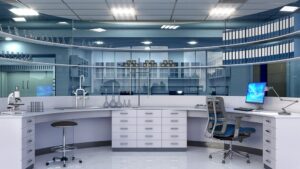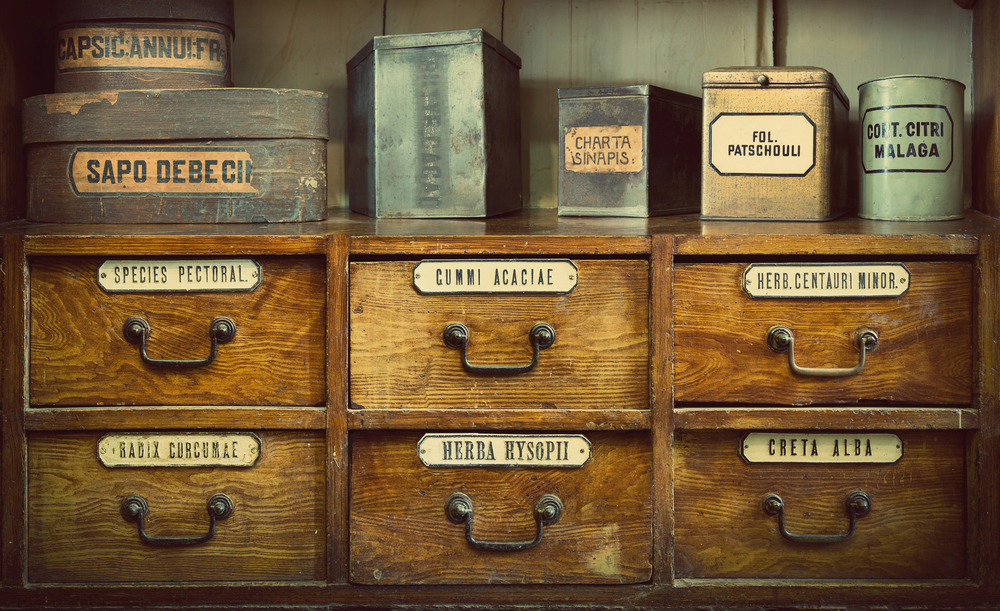
In the dynamic world of laboratory design, where innovation and efficiency are paramount, the concept of sustainability has gained significant traction. Laboratories, traditionally known for their high consumption of resources, are increasingly seeking ways to reduce their environmental footprint while optimizing costs. One innovative approach that has emerged is the repurposing of used cabinets.
This practice aligns with green initiatives and presents a practical solution for maximizing the utility of existing resources. The benefits of giving used cabinets a second life are manifold. To repurpose laboratory cabinets is a win-win strategy to reduce waste, conserve valuable materials, and achieve substantial cost savings.
Moreover, this practice supports the broader sustainability goals that many organizations strive to achieve, enhancing their corporate social responsibility (CSR) profiles in the process.
In this article, we will explore the myriad advantages of repurposing used laboratory cabinets, delve into the essential steps for assessing and preparing these cabinets for new uses, and showcase a variety of creative and functional applications within laboratory settings.
We aim to inspire and guide laboratory designers, builders, and managers in integrating repurposed cabinets into their spaces. Join us as we uncover how old cabinets can find new purpose, driving both innovation and sustainability in the laboratory environment.
The Benefits of Repurposing Used Cabinets
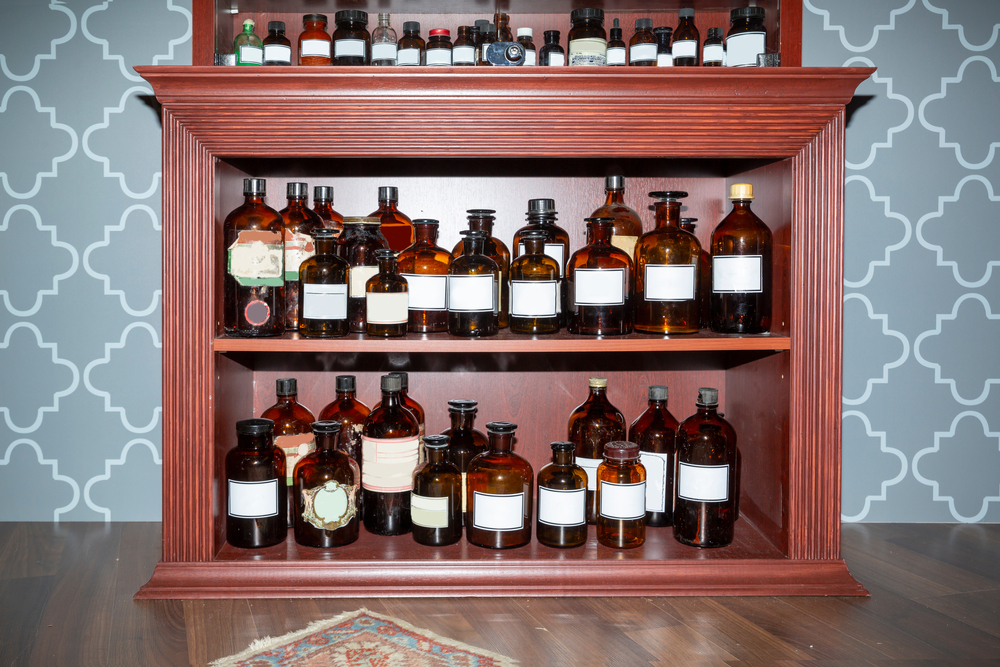
Repurposing used cabinets in laboratory settings offers a range of benefits that contribute to both environmental sustainability and economic efficiency. By extending the life cycle of existing materials, laboratories can make significant strides toward reducing their ecological footprint while also reaping financial rewards. Here, we explore the key advantages of repurposing used cabinets.
1. Environmental Impact
- Reduction of Waste: Repurposing old cabinets helps minimize the amount of waste sent to landfills. By reusing materials that would otherwise be discarded, laboratories contribute to waste reduction efforts, playing a part in tackling the global waste crisis.
- Conservation of Resources: Manufacturing new cabinets requires raw materials, energy, and water. By repurposing existing cabinets, laboratories reduce the demand for these resources, helping to conserve natural assets and lower the environmental impact associated with production processes.
2. Economic Advantages
- Cost Savings for Labs: Purchasing new laboratory cabinets can be a significant expense. Repurposing used cabinets presents a cost-effective alternative, allowing laboratories to allocate their budgets more efficiently. The savings achieved can be redirected towards other critical areas such as research, technology upgrades, or employee training.
- Potential for Budget Reallocation: The financial savings from repurposing can enable laboratories to invest in other sustainability initiatives, enhancing overall operational efficiency. This budget flexibility can lead to improvements in various aspects of laboratory management and development.
3. Sustainability Goals
- Aligning with Green Initiatives: Many organizations have set ambitious sustainability targets. Repurposing used cabinets aligns with these goals by promoting recycling and resource conservation. Laboratories that adopt this practice can showcase their commitment to sustainability, both internally and externally.
- Enhancing Corporate Social Responsibility (CSR) Profiles:Demonstrating a commitment to sustainable practices can significantly enhance an organization’s CSR profile. By repurposing used cabinets, laboratories can present themselves as responsible and forward-thinking entities, which can improve their reputation and appeal to environmentally conscious stakeholders, including clients, partners, and employees.
In summary, the benefits of repurposing used cabinets in laboratory settings are clear and compelling. By reducing waste, conserving resources, saving costs, and supporting sustainability goals, laboratories can achieve a harmonious balance between innovation and environmental responsibility. This approach not only makes practical sense, but also positions laboratories as leaders in the movement towards a more sustainable future.
Assessment and Preparation of Used Cabinets

Before repurposing used cabinets for new applications in laboratory settings, it is crucial to conduct a thorough assessment and preparation process. Ensuring that the cabinets are in suitable condition and meet safety standards is essential for their effective and safe reuse. This section outlines the key steps involved in assessing and preparing used cabinets for their second life.
1. Condition Assessment
- Checking Structural Integrity: The first step in repurposing used cabinets is to evaluate their structural integrity. Inspect the cabinets for signs of damage, such as cracks, dents, or warping. Ensure that the frame, doors, and drawers are all functioning properly. Cabinets that are structurally sound can be safely repurposed, while those that are not should be repaired or recycled responsibly.
- Identifying Necessary Repairs or Refurbishments: Once the structural integrity has been assessed, identify any repairs or refurbishments needed to bring the cabinets up to standard. This might include replacing damaged hinges, handles, or shelves, as well as reinforcing weak areas. Refurbishments can also involve cosmetic improvements such as repainting or refinishing surfaces to give the cabinets a fresh, new look.
2. Safety Considerations
- Ensuring Cabinets Meet Safety Standards: Safety is paramount in laboratory environments. Ensure that repurposed cabinets meet all relevant safety standards and regulations. This includes verifying that the cabinets can securely store hazardous materials, if needed, and that they are stable and free from potential hazards.
- Handling Any Hazardous Materials from Previous Use: If the cabinets were previously used to store hazardous materials, it is essential to handle and dispose of any residual substances safely. This may involve specialized cleaning procedures or decontamination processes to ensure that the cabinets are safe for reuse. Consult safety experts or industry guidelines to address any potential risks effectively.
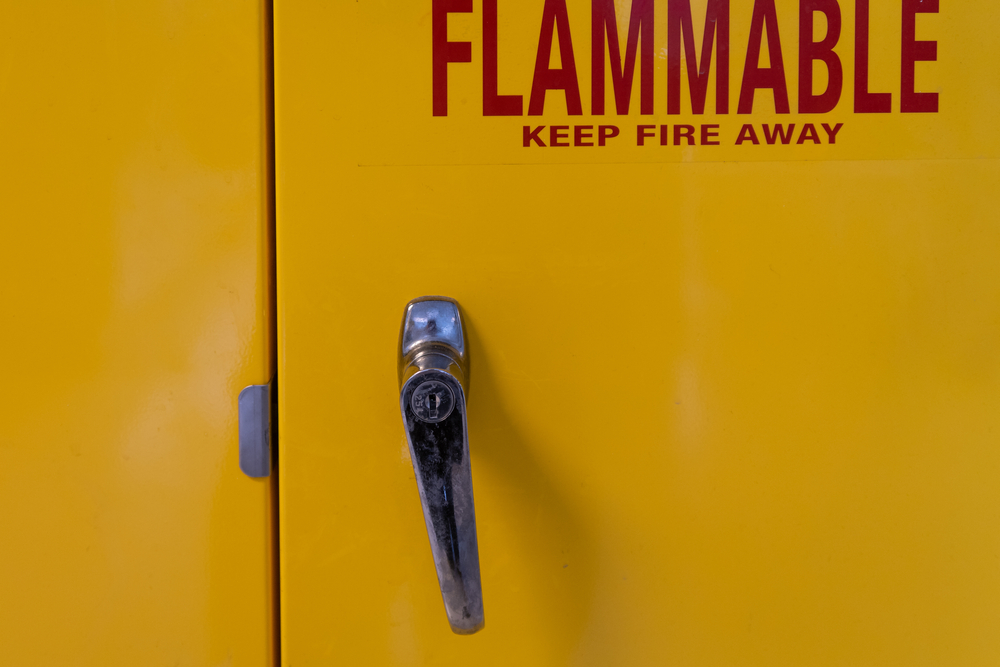
3. Cleaning and Refurbishing
- Steps to Properly Clean and Sanitize: Thoroughly cleaning and sanitizing used cabinets is crucial to ensure they are safe and hygienic for laboratory use. Use appropriate cleaning agents to remove dirt, grime, and any chemical residues. For cabinets that stored hazardous materials, follow specific decontamination protocols to eliminate any remaining contaminants.
- Techniques for Refurbishing (e.g., Repainting, Replacing Parts): Refurbishing used cabinets can significantly enhance their appearance and functionality. Repainting the cabinets can give them a fresh, modern look, while replacing worn or outdated parts, such as handles and locks, can improve their usability. Consider using powder-coated finishes for added durability and resistance to chemicals and wear.
Related Reading: Chemistry Lab Cabinets: A Buyer’s Guide to Safety and Storage
In conclusion, the assessment and preparation of used cabinets are critical steps in ensuring their safe and effective repurposing in laboratory settings.
By carefully evaluating their condition, addressing any necessary repairs, and adhering to safety standards, laboratories can transform old cabinets into valuable assets. Proper cleaning and refurbishing further enhances the cabinets’ longevity and utility, paving the way for their successful integration into new laboratory environments.
Creative Uses for Repurposed Cabinets in Laboratory Settings
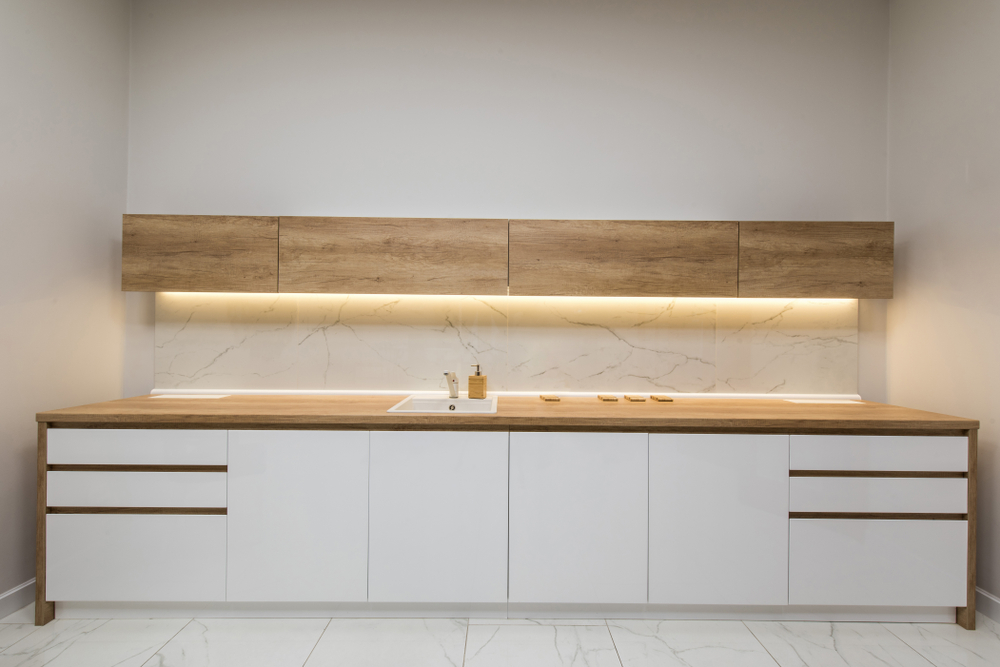
Repurposing used cabinets in laboratory settings offers a multitude of creative possibilities that can enhance functionality, efficiency, and aesthetics. By thinking outside the box, laboratories can transform old cabinets into innovative solutions that meet their specific needs. This section explores various creative uses for repurposed cabinets in laboratory environments.
1. Storage Solutions
- Converting Old Cabinets into Efficient Storage Units: One of the most straightforward uses for repurposed cabinets is as storage units. By customizing the internal layout, these cabinets can be tailored to store specific laboratory equipment, tools, and supplies. Adjustable shelving, dividers, and bins can maximize storage capacity and organization, making it easy to access and manage laboratory items.
- Customizing for Specific Laboratory Needs: Repurposed cabinets can be adapted to meet the unique requirements of different laboratory disciplines. For instance, cabinets can be outfitted with specialized racks for storing glassware in a chemistry lab, or with compartments for biological samples in a biology lab.
- Display Units: Transform them into display cases for showcasing equipment, specimens, or achievements.
This customization ensures that storage solutions are not only efficient but also aligned with the laboratory’s specific operational needs.
2. Mobile Workstations
- Adding Casters for Mobility: Transforming used cabinets into mobile workstations adds a layer of flexibility to laboratory environments. By attaching casters to the base, these cabinets can be easily moved around the lab, providing a versatile work surface wherever it is needed. This mobility is particularly useful in dynamic lab settings where workspace requirements frequently change.
- Integrating Work Surfaces and Tool Storage: Repurposed cabinets can be modified to include durable work surfaces, such as stainless steel or epoxy resin tops, making them ideal for tasks that require a sturdy, easy-to-clean area. Additionally, integrating tool storage into the cabinet design ensures that essential tools and instruments are always within reach, enhancing productivity and workflow.
3. Specialized Equipment Housing
- Modifying Cabinets to House Sensitive Equipment: Certain laboratory equipment, such as fume hoods, incubators, or centrifuges, require specific housing solutions. Repurposed cabinets can be modified to accommodate these specialized needs. For example, adding ventilation systems, insulation, or reinforced shelving can make an old cabinet suitable for housing sensitive equipment.
- Enhancing Functionality with Added Features (e.g., Ventilation): To further enhance the functionality of repurposed cabinets, additional features can be incorporated. Installing ventilation fans, temperature controls, or power outlets can transform a standard cabinet into a sophisticated piece of laboratory furniture capable of supporting a wide range of scientific activities.
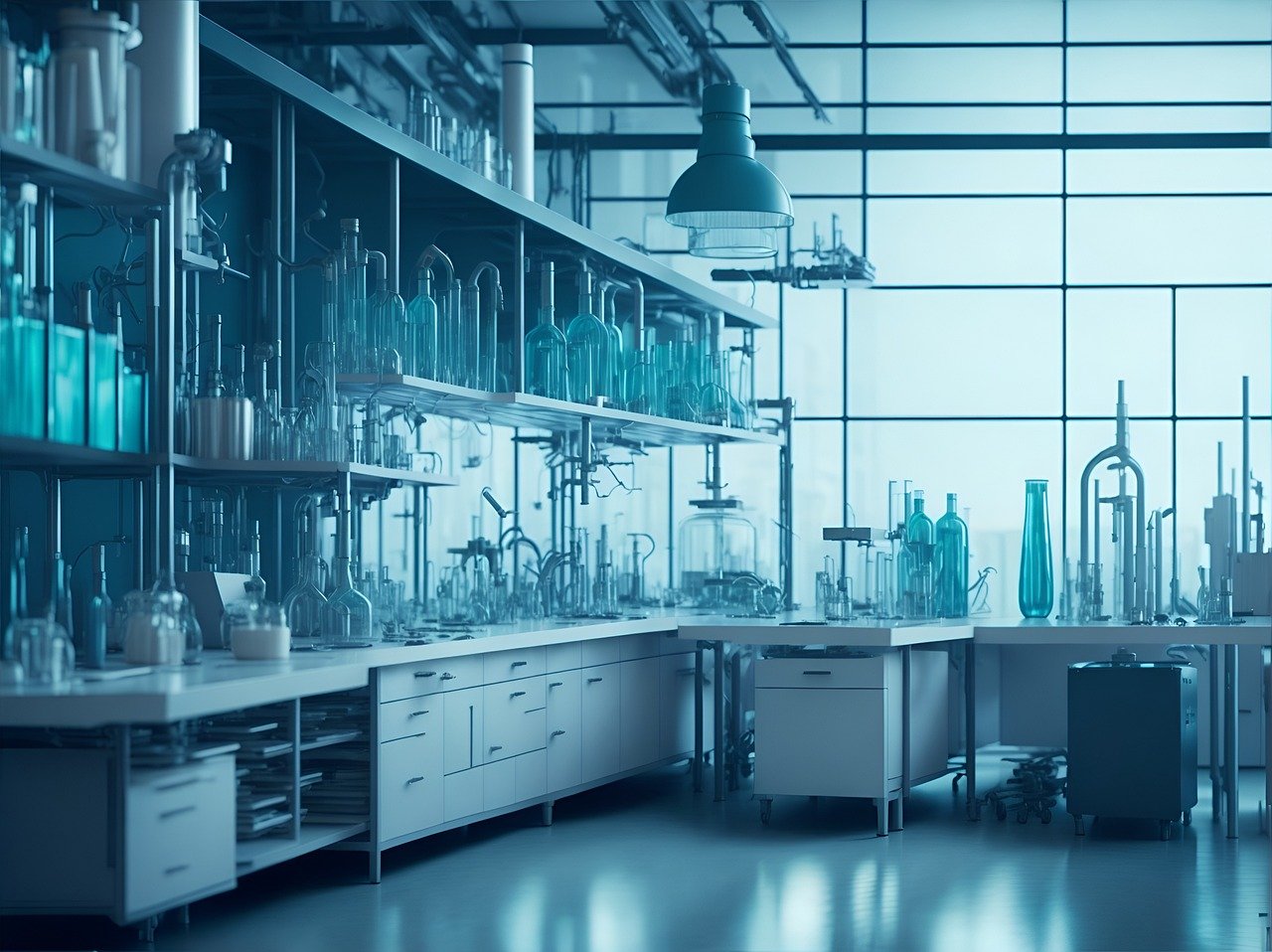
4. Collaborative Work Areas
- Using Cabinets to Create Modular, Collaborative Spaces: Repurposed cabinets can be used to design modular workspaces that encourage collaboration among laboratory staff. Arranging cabinets in clusters or islands can create designated areas for group work, brainstorming sessions, or collaborative experiments. This approach fosters a more interactive and cooperative lab environment.
- Encouraging Teamwork and Flexible Use of Space: Modular setups using repurposed cabinets can be easily reconfigured to suit different projects or team sizes. This flexibility allows laboratories to adapt their workspace to the evolving needs of their staff and research activities, promoting a more dynamic and responsive working environment.
5. Non-Lab Ways to Repurpose Used Cabinets
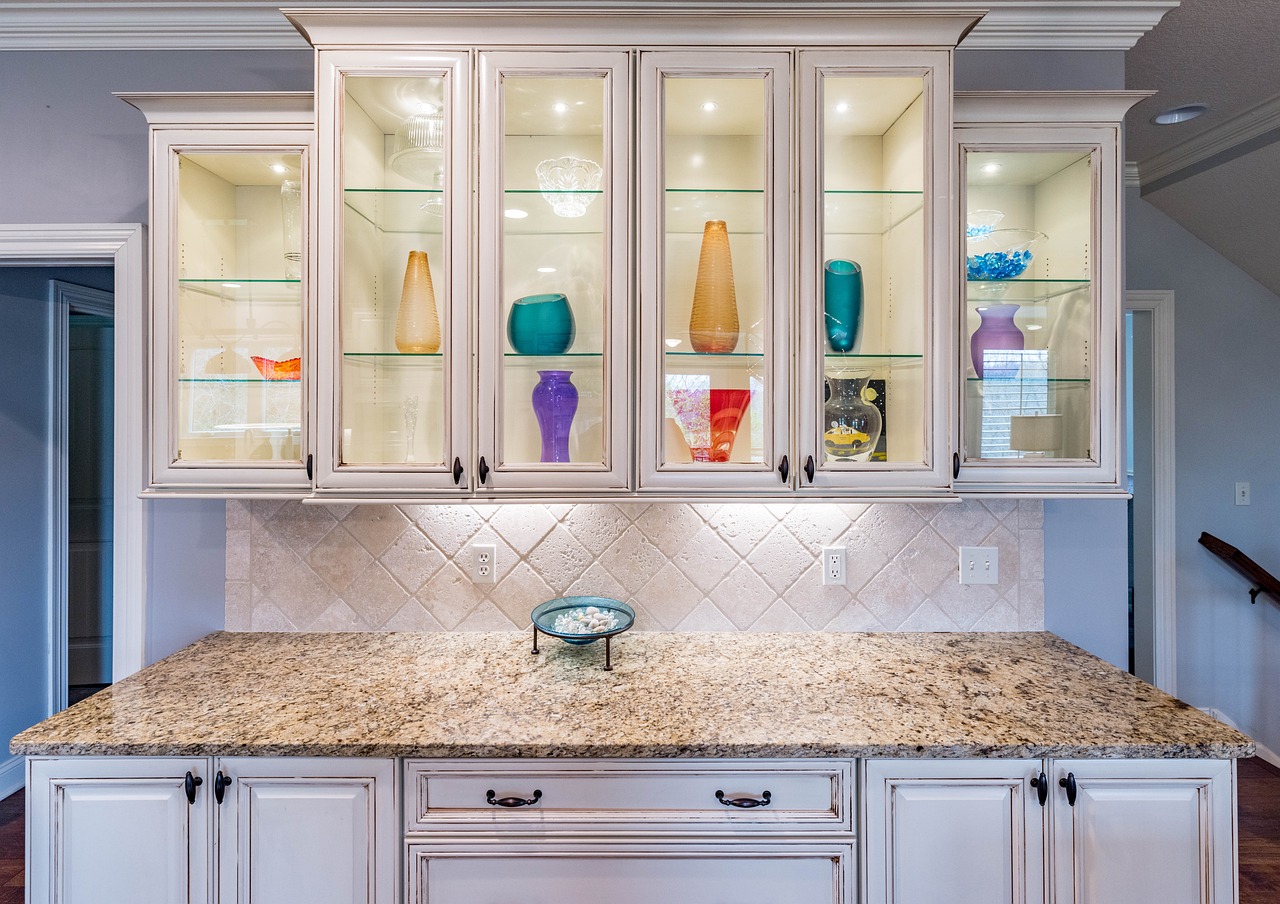
When there are no purposeful ways to use old cabinets in the lab, why not take them home? Here are some ideas to get you going:
- Arts and Crafts Storage: Outside of the lab, they can store art supplies, tools, or other hobby materials.
- Garage or Workshop Storage: Repurpose them in a garage or workshop for storing tools, hardware, or gardening supplies.
- Home Storage: Use them in basements, sheds, or utility rooms for storing household items like cleaning supplies or seasonal decorations.
- Vertical Gardens: Convert them into vertical planters for growing herbs, flowers, or small vegetables indoors.
In a nutshell, the creative uses for repurposed cabinets in laboratory settings are diverse and impactful. By converting old cabinets into efficient storage solutions, mobile workstations, specialized equipment housing, and collaborative work areas, laboratories can enhance their operational efficiency and adaptability. These innovative applications make practical use of existing resources and contribute to a more sustainable and functional laboratory environment.
Case Studies and Real-World Examples
Exploring real-world examples and case studies of repurposed cabinets in laboratory settings provides valuable insights into the practical applications and benefits of this sustainable practice.
These stories highlight the creativity and innovation involved in giving used cabinets a second life, demonstrating the tangible advantages for various types of laboratories. In this section, we present a selection of successful repurposing projects and innovative designs that have made a significant impact.
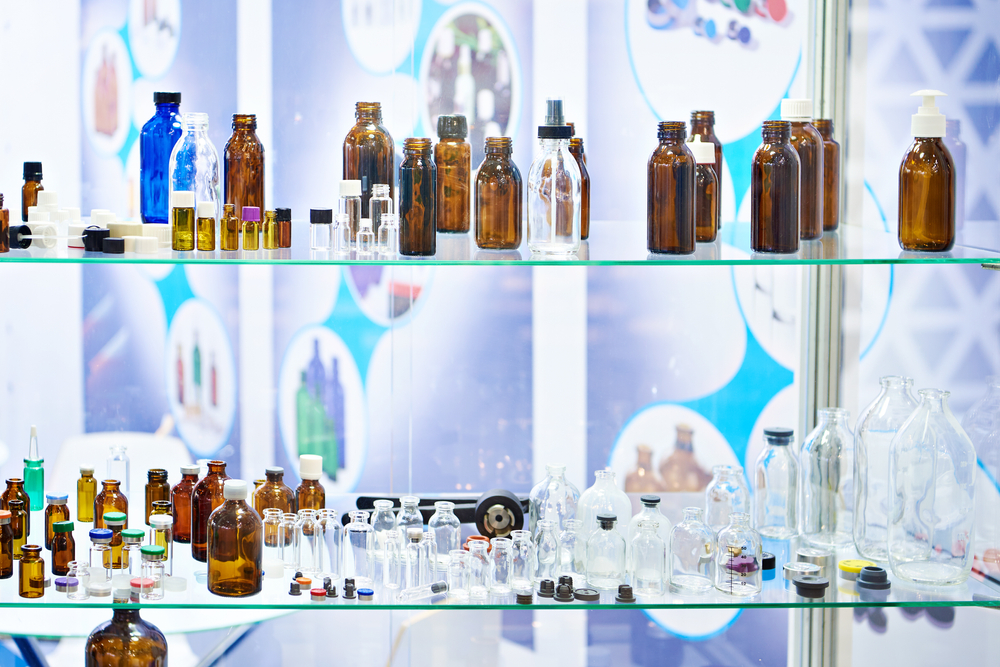
1. Successful Repurposing Projects
- Case Study 1: University Research Lab Transformation
At a prominent university, the research laboratory faced budget constraints but needed to expand its storage capacity. The solution came in the form of repurposing old cabinets that were originally destined for disposal. After a thorough assessment and refurbishment process, the cabinets were transformed into modern, efficient storage units tailored to the lab’s specific needs.
The project saved money and aligned with the university’s sustainability goals. The repurposed cabinets provided ample storage for research materials, instruments, and documents, significantly improving the lab’s organization and workflow.
- Case Study 2: Industrial Lab’s Mobile Workstations
An industrial laboratory specializing in chemical analysis required flexible workstations to accommodate its dynamic work processes. Repurposed cabinets were fitted with casters and durable work surfaces, creating mobile workstations that could be easily relocated within the lab. This flexibility allowed the lab to reconfigure its layout based on ongoing projects and workflow demands.
The mobile workstations also integrated tool storage, ensuring that essential equipment was always accessible. The successful implementation of these repurposed cabinets enhanced the lab’s efficiency and adaptability, demonstrating the practical benefits of creative reuse.
2. Innovative Designs
- Example 1: Customized Storage for Biotech Lab
A biotechnology laboratory needed specialized storage for its delicate biological samples and equipment. By repurposing old cabinets, the lab created customized storage solutions with added insulation and temperature control features. The cabinets were modified to include compartments for specific types of samples and were equipped with digital monitoring systems to ensure optimal storage conditions.
This innovative use of repurposed cabinets provided the biotech lab with highly functional and cost-effective storage solutions, tailored to its precise requirements.
- Example 2: Collaborative Spaces in Pharmaceutical Lab
A pharmaceutical laboratory sought to foster greater collaboration among its research teams. Repurposed cabinets were used to create modular workstations and collaborative zones within the lab. The cabinets were arranged in clusters, with integrated seating and work surfaces that encouraged group discussions and joint experiments.
This setup facilitated better communication and teamwork, leading to more efficient research processes and innovative outcomes. The use of repurposed cabinets maximized the lab’s existing resources and contributed to a more interactive and productive work environment.

3. Outcomes and Benefits Experienced
- Enhanced Efficiency and Cost Savings
The case studies and examples highlighted above demonstrate significant improvements in laboratory efficiency and cost savings through the repurposing of used cabinets. By avoiding the expense of new furniture, laboratories can allocate their budgets to other critical areas, such as research and development, staff training, or technological upgrades.
- Sustainability and Environmental Impact
Repurposing cabinets reduces waste and conserves resources, directly contributing to sustainability goals. Laboratories that engage in these practices showcase their commitment to environmental responsibility, which can enhance their reputation and appeal to eco-conscious stakeholders.
- Improved Laboratory Functionality
The creative and customized solutions made possible by repurposing cabinets lead to improved functionality within laboratories. Tailoring storage and workspaces to specific needs enhances organization, accessibility, and productivity, ultimately supporting the laboratory’s overall mission and objectives.
In summary, these case studies and real-world examples illustrate the transformative potential of repurposing used cabinets in laboratory settings. Through innovative design and practical application, laboratories can achieve substantial benefits in terms of efficiency, cost savings, sustainability, and functionality.
These success stories serve as inspiration for other laboratories considering the adoption of repurposing practices, highlighting the significant impact of giving old cabinets a new lease on life.
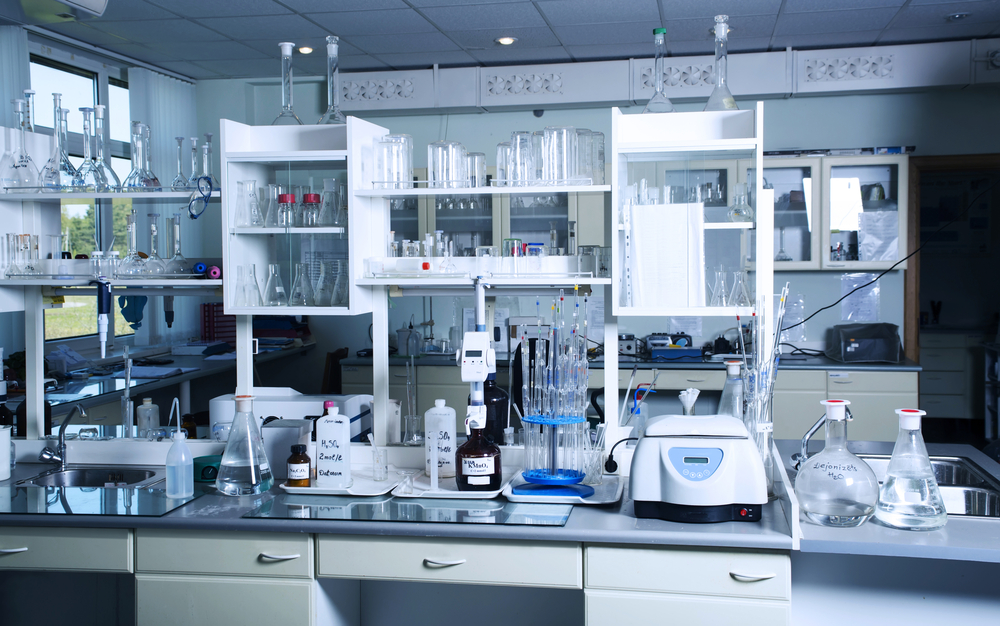
Tips for Implementing Repurposing Projects in Your Laboratory
Successfully repurposing used cabinets in your laboratory requires careful planning, collaboration, and ongoing maintenance. Here are some practical tips to guide you through the process and ensure that your repurposing project is both effective and sustainable.
1. Planning and Design
- Assess Laboratory Needs: Begin by evaluating the specific needs of your laboratory. Identify areas where additional storage, workspaces, or equipment housing is required. Consider the types of materials and tools that need to be stored and the workflows that could benefit from reconfigured spaces.
- Create a Repurposing Plan: Develop a detailed plan that outlines the objectives, scope, and timeline of your repurposing project. Include an inventory of the used cabinets available for repurposing, their current condition, and potential uses. Establish clear goals and criteria for the project’s success.
- Design Custom Solutions: Work with your team to design customized solutions that address the identified needs. Consider the layout, functionality, and aesthetics of the repurposed cabinets. Use sketches, diagrams, or digital models to visualize the final setup and ensure that it meets your laboratory’s requirements.
2. Collaboration with Experts
- Consult Designers and Builders: Engage with laboratory designers and builders who have experience in repurposing projects. Their expertise can help you identify the best ways to modify and refurbish used cabinets, ensuring that the final products are safe, functional, and aesthetically pleasing.
- Regulatory Compliance: Ensure that the repurposed used cabinets still meet relevant safety and regulatory standards, such as those set by OSHA, NFPA, and ANSI. This is particularly important for chemical storage cabinets.
- Work with Safety and Sustainability Experts: Collaborate with safety experts to ensure that the repurposed cabinets comply with all relevant safety standards and regulations. Additionally, seek advice from sustainability consultants to maximize the environmental benefits of your project and align with best practices in green design.
3. Ongoing Maintenance and Evaluation
- Regularly Inspect Repurposed Cabinets: Conduct routine inspections of the repurposed cabinets to ensure they remain in good condition. Check for signs of wear and tear, structural integrity, and functionality. Address any issues promptly to maintain the safety and usability of the cabinets.
- Make Necessary Adjustments and Improvements: Based on the feedback from laboratory staff and the results of regular inspections, make adjustments and improvements to the repurposed cabinets as needed. This could include reinforcing weak areas, updating storage configurations, or adding new features to enhance functionality.
- Document and Share Successes: Keep detailed records of your repurposing project, including before-and-after photos, cost savings, and any improvements in laboratory efficiency or sustainability. Sharing these successes with your team and stakeholders can build support for future repurposing initiatives and highlight your laboratory’s commitment to sustainable practices.
4. Engage and Educate Staff
- Involve Staff in the Process: Encourage staff participation in the planning and implementation stages of the repurposing project. Their insights and feedback can provide valuable perspectives on how the repurposed cabinets can best serve their needs and improve workflow.
- Provide Training on New Configurations: Once the repurposed cabinets are in place, offer training sessions to familiarize staff with the new setups. Ensure they understand how to use the cabinets effectively and how to maintain them properly to prolong their lifespan.
5. Promote a Culture of Sustainability
- Highlight the Environmental Benefits: Educate your team about the environmental impact of repurposing used cabinets. Emphasize the reduction in waste, conservation of resources, and contribution to sustainability goals. This awareness can foster a culture of sustainability within the laboratory.
- Encourage Continuous Improvement: Promote ongoing efforts to identify other areas where repurposing and recycling can be applied. Encourage staff to suggest new ideas for repurposing and to stay informed about the latest trends and innovations in sustainable laboratory design.
In conclusion, implementing repurposing projects in your laboratory requires careful planning, collaboration, and ongoing maintenance. By assessing needs, collaborating with experts, maintaining the repurposed cabinets, engaging staff, and promoting sustainability, your laboratory can successfully transform used cabinets into valuable assets.
These efforts not only enhance the functionality and efficiency of your laboratory but also contribute to a more sustainable and responsible operation.
Related Reading: How to Find High-Quality Used Laboratory Furniture
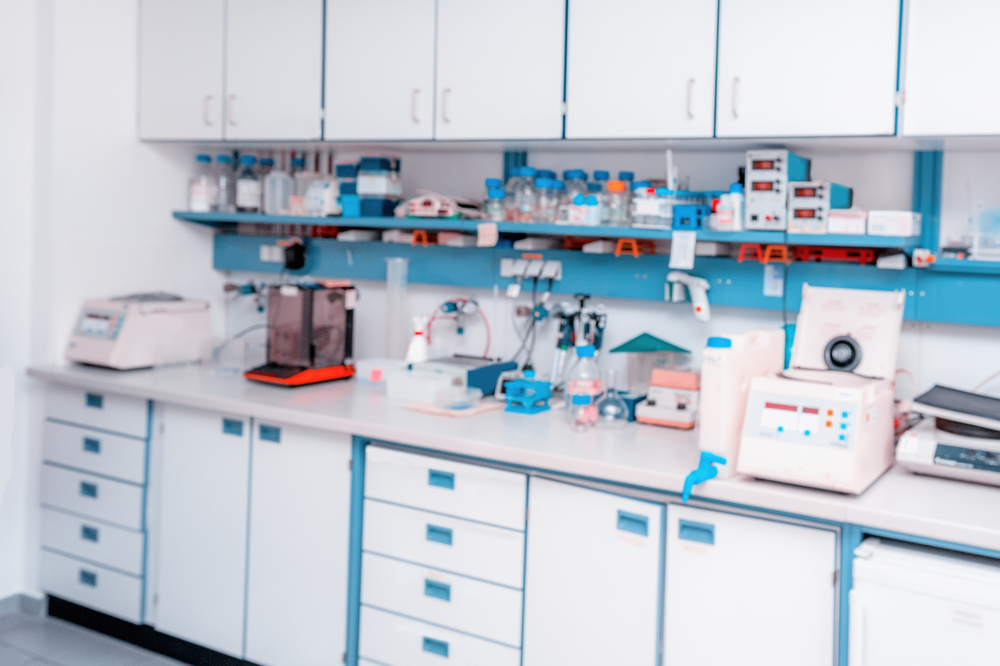
Conclusion
Repurposing used cabinets in laboratory settings is a powerful strategy that combines sustainability, cost-efficiency, and innovation. By giving old used cabinets a second life, laboratories can significantly reduce waste, conserve resources, and achieve substantial financial savings. Through careful assessment, creative modifications, and ongoing maintenance, repurposed cabinets can be transformed into valuable storage solutions, mobile workstations, specialized equipment housings, and collaborative spaces.
The case studies and examples presented in this article demonstrate the practical benefits and transformative potential of repurposing projects. Laboratories that embrace this approach enhance their operational efficiency and contribute to broader sustainability goals, showcasing their commitment to environmental responsibility.
Implementing repurposing projects requires thoughtful planning, collaboration with experts, and active engagement with staff. By following the tips provided, laboratories can successfully integrate repurposed cabinets into their environments, fostering a culture of sustainability and continuous improvement.
Embrace the future of laboratory design by repurposing used cabinets. Take the first step towards a more sustainable and efficient laboratory today. Contact Genie Scientific, accredited experts in lab design, without delay!




